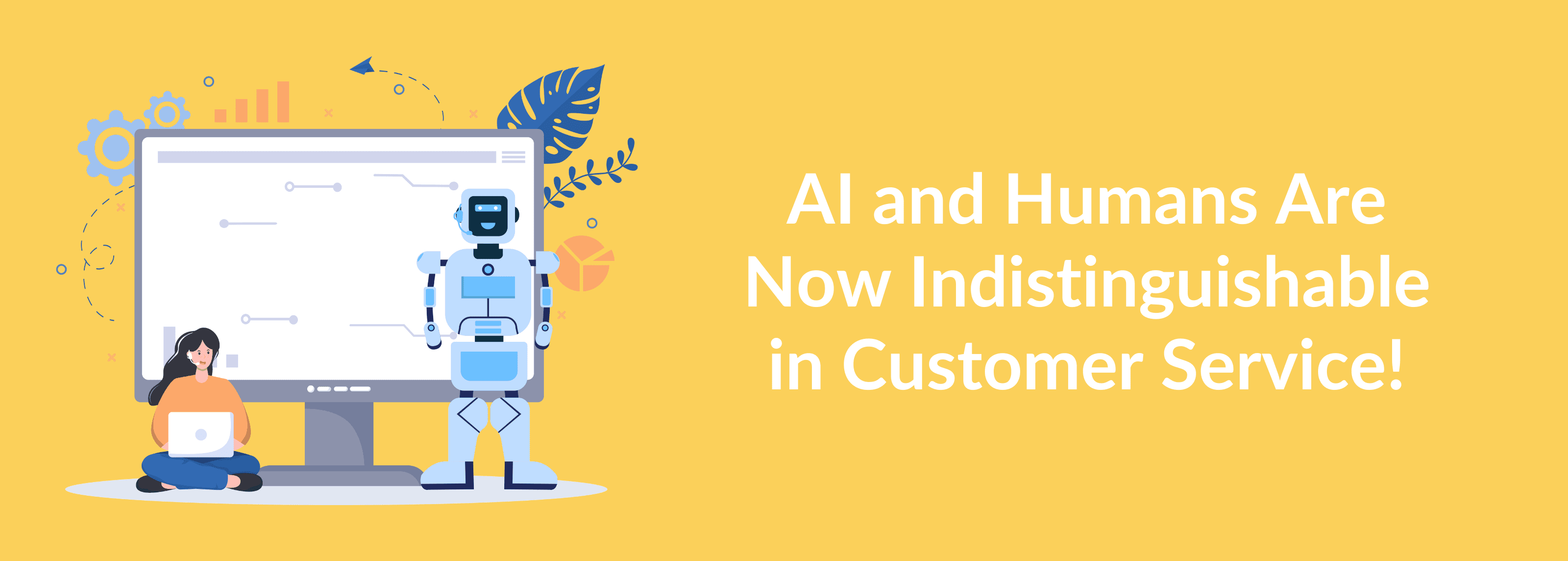AI and Humans Are Now Indistinguishable in Customer Service!
Marc Benioff, CEO of Salesforce, said AI agents have reached “another level of capability.” He further added that AI and human customer service agents are indistinguishable.
Earlier this year, Swedish fintech company Klarna claimed its AI assistant was doing “the equivalent work of 700 full-time agents.”
The CEO of Octopus Energy, a UK-based household energy supplier, said emails written by AI delivered 80% customer satisfaction, improving on the 65% achieved by skilled, trained people.
There is a flip side to it.
Recently, McDonald’s said it was removing its automated order-taker technology from over 100 restaurants after videos showing flaws with the tech went viral.
While AI is transforming customer service with impressive results, examples like the McDonald’s one remind us that a rushed or poorly integrated AI solution can lead to failure and even damage the customer experience.
As a business in the customer experience function, if I am beginning my Artificial Intelligence (AI) journey, how do I go about doing it?
Start Small With Specific Use Cases
You shouldn’t be thinking about overhauling your entire customer experience function with AI. You should begin with specific use cases.
Chatbots are a great place to begin your AI journey. You can automate all mundane queries like account balance, last five transactions, order status, or product information.
Email triage is another use case you can try with AI. Let us assume that you receive 100 support emails in a day, and you can use AI to prioritize and address them.
This would allow you to get a feel for AI and drive value.
AI Definitely Augments Human Efforts
Instead of trying to replace humans, you should look at augmenting and providing great customer experiences.
How do you go about it?
Look at something like Agent Assist. AI can assist agents in real time with suggestions or prompts and help expedite response times while improving accuracy.
Don’t Pretend AI Is Human
While AI can be human-like, you have to understand they are not humans.
Marc Benioff’s comment on the ability of AI to be indistinguishable from humans may indicate where the technology is heading, but it cannot be the truth.
You should always keep your customers aware that they are interacting with technology, especially when the issue is complex, where they need an empathetic agent to address their problems.
Always provide them with an option to seamlessly switch to talking to an agent.
Prioritize Accuracy by Training the AI Models
AI is only as good as the data it is trained on. The higher the quality of data you use, the better the AI response will be in delivering experiences.
You can also use pre-trained AI models and compare them for accuracy or human-like accuracy.
Also, the results should be validated against different data points to see how well AI is performing.
Otherwise, train the models to reach the level of accuracy that your industry desires or that is possible with traditional methods.
Besides, AI systems need continuous updates and training to keep pace with evolving customer experience needs.
Test, Test, and Test
You should thoroughly test your AI in controlled or pilot environments before a full rollout.
For instance, taking an AI-powered chatbot with a small percentage of website traffic or after-hours customer queries would be a great starting point.
Seek customer feedback and focus on customer satisfaction metrics before rolling them out.
AI and Empathy
We are a few years away from getting AI to emote well. Blending empathy in customer experience is essential, especially in verticals like healthcare.
As a starting point, it makes sense to automate all the mundane and let human agents handle the empathetic interactions. For instance, in the healthcare industry, you can let AI handle appointment scheduling, rescheduling, cancellations, confirmations, and notifications. For the rest, you should route it through humans.
This would ensure that customers feel heard and supported.
Measure Productivity
When you use AI, productivity and customer satisfaction should be the front and center of what you measure.
- How well is AI resolving customer issues on the first try?
- Are customers happy with AI-assisted service in comparison to human-assisted service?
- Has AI helped reduce the workload of agents, allowing them to focus on higher-value tasks?
This would ensure that AI is adding the right value where it matters.
Keep Iterating
AI is not something that you can implement and forget. You should prepare for a continuous cycle of improvement.
This includes monitoring AI performance, gathering customer feedback, and training the AI models to refine how it functions.
Over time, you would have a system that is close to human-assisted experiences.
Marc Benioff’s optimism in where AI is headed shows where the future is headed, but as someone beginning the AI journey, you should take baby steps with defined use cases, measure the effectiveness, and improvise.
AI’s true value lies not in replacing human beings but in optimizing how resources are used and providing the best possible customer experiences.
